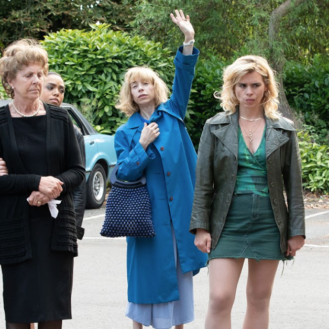Anthony Powell was finding it impossible explaining to others what Antarctic life is really like. For someone who has spent extended time in the chilly climate, it was truly a daunting task trying to find the right words to describe the torrential winds and the degree of cabin fever.
Over the next ten years, Powell has made it his quest to create the ultimate tell-all about Antarctica. He built equipment that could sustain extreme cold, found the correct cameras, and exercised patience and discipline to capture breathtaking time lapse sequences. The result is Antarctica: A Year on Ice, and it’s absolutely incredible.
Powell is right. After experiencing his footage, you can’t get a feel for the frigid environment through the spoken word. You have to see nature take its course. We watch icebergs formate and clouds swirl together as if we’re watching an art canvas come to life. The choice to use lots of time lapse footage is wise since showing pictures of the quiet environments wouldn’t do either the film or Antarctica justice. The scenes always have a flow to them, which draws our eyes to the gradual Arctic change.
To think that one of these cutaways – which has taken up a whole ten seconds worth of movie – has been filmed over oodles of hours shows how dedicated Powell is to this passion project. He doesn’t graze over any element, yet the movie moves quickly and it’s always a marvel to look at.
The first-time filmmaker documents new arrivals to Antarctica as they file out of their transportation and quickly move to their working quarters. The main focus for most of those living in Antarctica is for scientific purposes as well as for other miscellaneous labour. One worker describes the setting as Peter Pan’s Neverland. Once the last plane leaves, no one goes anywhere, which makes people grow closer and take on carefree attitudes when they’re not working. We see this reaction come to fruition during a segment at a jovial sunlit New Year’s Eve countdown.
Antarctica: A Year on Ice strays away from rattling off sheets of data. Instead, Powell’s doc keeps matters very personal. Antarctic inhabitants describe their enchantment in ways that sound authentic, even though we’re nice and snug from inside our heated theatre. They also tell us about how the distance has wore them down at times. One worker explains about hearing about the death of a close one over the phone, another explains about the bittersweet feeling of hearing news about his sister’s newborn baby.
Powell could’ve afforded to be more analytical during those maddening months without sunlight. Interviewees tell us about their moments of mental relapse during the long dark haul, and some even lose their train of thought on camera. In this month’s holiday issue of First For Women, an article states that “animal research from Japan reveals that exposure to formaldehyde – a common air pollutant emitted by home materials – triggers disruptions of one’s HPA (hypothalamus-pituitary-adrenal) axis”. Those who stay indoors in Antarctica must have an HPA axis that’s through the roof. I want to know specifics!
We’ve seen time lapse used in films before, but Powell uses the technique to bring his film into a visceral, knowledgable experience. Antarctica: A Year on Ice is an enlightening, stunning documentary that needs to be seen on the big screen.





Be the first to comment